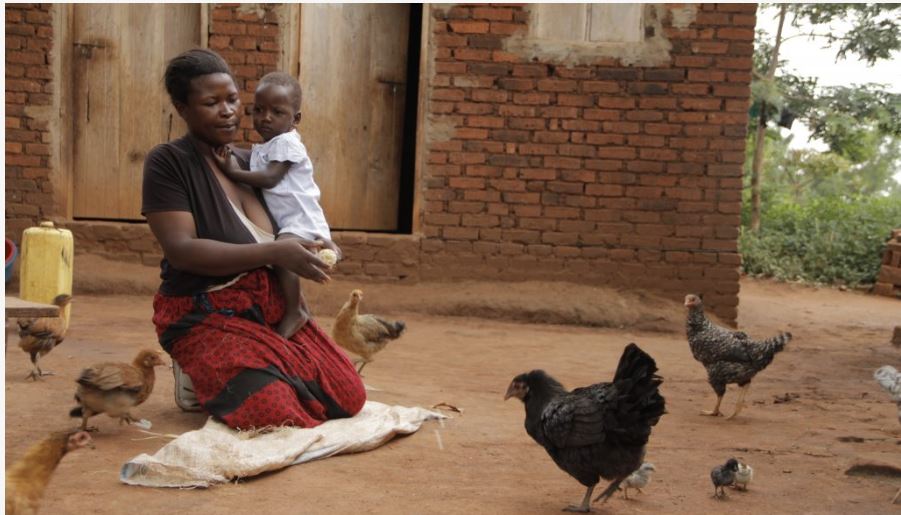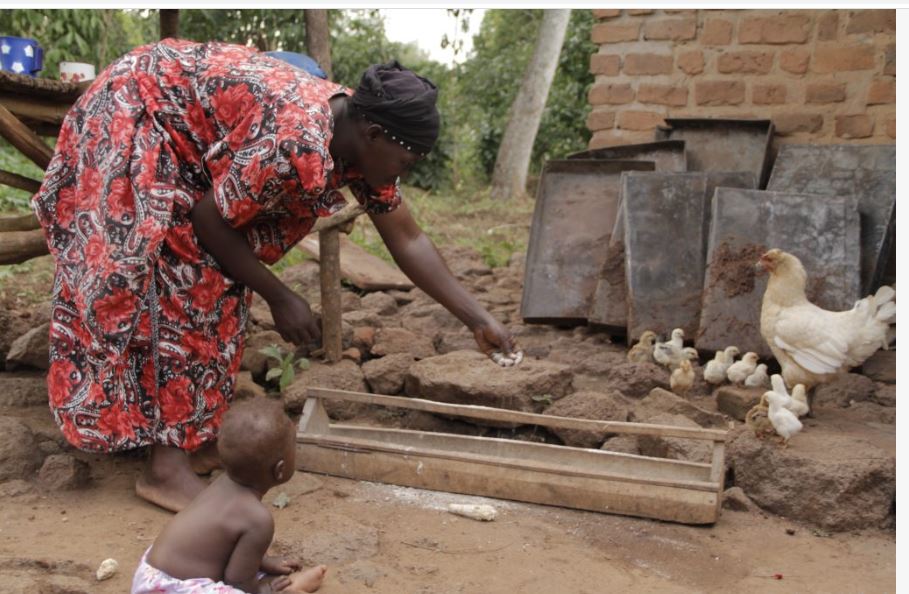
A lot of Ugandans have spacious homes with lots of empty spaces that they don’t know can be used for poultry farming to make them money if they ventured into rearing birds like chicken, ducks, turkeys, and other poultry.
Becoming an Agriprenuer does not necessarily need you to work on a big chunk of land, it all depends on knowing how to effectively utilize the space you have.
According to the National Agricultural Advisory Services (NAADS), Poultry farming contributes to improved human nutrition and food security by being a leading source of high-quality protein in the form of eggs and meat.
It also acts as a key supplement to revenue from crops and other livestock enterprises, thus avoiding over-dependence on traditional commodities with inconsistent prices.
It also has a high potential to generate foreign exchange earnings through the export of poultry products to neighboring countries.
When Janet Nailuba, from Buwolomena Village in Nabaale Sub-County, Mukono District started rearing hens in 2015, her only aim was their survival. This 42-year-old mother of ten never imagined standing confidently in front of small groups of women in her village to train them on basic chicken rearing techniques and explaining the importance of poultry farming. This has turned her into an Agriprenuer.

However, she has since become a model poultry farmer in her village, who earns income from her small poultry that has helped to improve her standard of living.
Nailuba now has over 50 chickens and two goats she bought using money she got from selling eggs and chickens. During the holidays she sells off mature chickens when the demand and prices are high and earns up to UGX Shs25,000 per bird.

She said; “My husband now respects me and we live in harmony. I also partnered with four women to form a welfare group for diversifying the means of our livelihood, and every week we each save Shs6,000.” The group has also obtained goats after bartering some of their chicken at the local market– each goat is bartered for seven mature chickens.
Like Nailuba, Susan Nandiyi, a resident of Nambale Village in Iganga District, is also a model poultry farmer whose increased income from poultry farming has provided her with an opportunity to take up more household responsibilities.
The mother of seven in her late thirties, has over 40 chickens having started with only 5. She said that initially, almost all of her birds succumbed to diseases, and the burden of providing to her family was left to her husband. But after learning the best practices of chicken rearing and how to vaccinate them, her poultry farm has since expanded and nowadays, through improved income from selling chickens, she is able to pay school fees for their children and buy medicine and food for the family when her husband is unable to or when their crop yield is poor.
Poultry Farming is characterized by widely diverse methods of production which include the following: village flocks, smallscale commercial flocks, and large-scale commercial farms. It is through venturing into such projects that many people are continually becoming Agriprenuers without realizing it.
Systems of Managing poultry agri-business
• Free range
• Semi-intensive
• Intensive
Starting Up
Before chicks arrive at home; make sure that;
– Paraffin lamps/electric bulbs/charcoal stove are available.
– Litter for the floor is available.
– 1m2 will accommodate 20 chicks up to 4 weeks old.
– Temperature control: 350C for day-old chicks, 24-270C for 1 week. Reduce heat as they grow especially at night.
Feeding Exotic chicken
Broilers – 1 to 3 weeks feed with chick mash, 3 to 6 weeks feed with broiler starter, thereafter with broiler finisher.
Layers – 1 to 8 weeks feed on chick mash after 8 weeks introduce growers mash gradually, then with layers mash after a drop of the first egg.
• Allow for good air circulation in laying house
• Layer needs on average 120 gm of food per day
• Distribute food troughs and water troughs evenly (one basin/50 birds)
• Laying nests must be kept in dark places, collect eggs 3 times a day.
• Provide soft clean litter.
• Store eggs with small end down.
• Clean dirty eggs with steel wool/coarse leaves (never wash them).
• Add greens to the diet and whenever possible vitamins to water.
• Debeaking at onset of lay.
• Culling when egg production drops below 40%.
Rearing Local Chicken
Advantages
a) They are self-sustaining i.e can raise their own replacement stock.
b) They are hardy birds that can survive hard conditions.
c) Management requirements are not critical as those of commercial exotic breeds.
d) They are immune to some diseases and parasites.
e) Their products fetch more money than those from exotic birds.
Limitations
a) They have low growth rate.
b) They produce fewer small sized eggs and comparatively little meat.
c) People keep them without commercial intentions.
Feeding Local Chicken
a) Farmers can mix their own feeds using the abundant carbohydrate and protein feed available in their area.
b) Feeding should be accompanied by green feeds and fruits such as pawpaws.
c) Only palatable green feeds should be given to birds. Avoid poisonous feeds.
Precaution during egg storage
(i) Do not store eggs in a kitchen where it is hot. Heat may partially incubate the egg and kill the embryos in them
(ii) Do not store them on top of a cupboard because heat from roof may incubate them.
(iii) Keep eggs in a cool secure place.
Incubation by mother hens
(i) Usually one bird starts incubating by staying overnight on the boiled egg.
Leave this hen on the boiled egg for 10 days while it is waiting for other birds.
(ii) After the 10 days, give all the birds that would have started incubating (within the 10 days) 17 selected but recently laid eggs.
(iii) Leave the birds that refuse to incubate alone.
(iv) If you want to eat or sell, eat/sell those which were laid first (old ones).
(v) Avoid giving these eggs to birds: very small, round eggs, very dirty, cracked eggs, extremely pointed eggs, very big eggs, very old eggs.
(vi) When done this way, all birds will hatch on the same day. An egg takes 21 days, 6 hours to hatch.
Eggs can also be collected and taken to a hatchery instead of incubation by mother hens.
General Disease Control Practices for hens
The following can only be used as guidelines for disease control, but for proper disease diagnosis and treatment, consult the veterinarian.
• Don’t overcrowd brooders
• Adequate ventilation
• Feed must be of good quality
• Give clean water ad-lib
• Don’t mix young and older birds
• Clean poultry house
• Dispose of dead birds quickly and isolate sick ones
• Provide disinfectant at entrance to house
Signs of ill health
– Dullness
– Reduced feed intake
-Reduced water intake
– Low egg production
– Reduced growth rate
– Rough coat
Record keeping
It should include:
• Production data e.g. number of eggs produced
• Amount of food eaten
• Health interventions e.g. treatment
• Deaths
• Sales and purchases
Constraints in poultry farming include:
Production related constraints like inadequate access to improved breed, access and affordability of feed, disease control, plus lack of knowledge and skills, inadequate capital at all levels and marketing.






